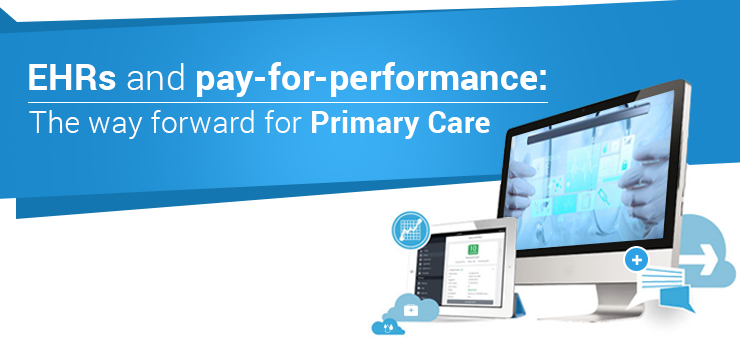Despite working for more hours and seeing more patients, Primary Care physicians struggle to earn even close to what other specialists such as cardiologists, urologists and orthopedic doctors do. However, the introduction of Electronic Health Records (EHRs), and the talk of an industry-wide shift towards the pay-for-performance model in the coming years have begun to stir up winds of change.
Ever since the Affordable Care Act of 2009, EHRs have been in the headlines of the healthcare industry. By now you probably know that questioning the need for such systems is redundant as they’re here to stay. Moreover, those who have used these systems properly have seen significant productivity and revenue boosts.
The article explains exactly how an understaffed and overworked primary care physician can benefit from an EHR? And are these benefits long term?
As for the benefits, although typing might initially take you longer than a pen and pad would, it is permanently stored in your system and readily available on subsequent patient visits. You do not need storerooms full of patient files, and for your assistant to spend valuable minutes searching relevant files, whenever you need to view patient information.
Data for different members of the same family can automatically create family links, which allow you to analyze genetic conditions, allergies, and other similarities and differences from a single screen. The same data can be sent across providers, practices, and healthcare professionals online; exponentially speeding up the care process.
Moreover, this system allows you to electronically prescribe medication via thousands of pharmacies across the country; making the process extremely convenient for everyone involved. There are drug interaction checks to determine what a patient is using, and such tick-box options are used for clinical decision support (CDS). This is similar to the auto complete option in mobile phones, where the phone automatically suggests probable words and sentences based on the entry and preferences.
Extend this process to your practice: the system analyzes specific entries (related to the patient) and suggests procedures, labs and even recommends specialists. For example, for a patient suffering from a certain disease, and allergic to a certain medicine and food item, the system will already contain this data. When the doctor checks specific options such as, shortness of breath; the EHR will analyze the data for all these filters, and others entered into the patient record, before making a calculated suggestion based on logics and your past analyses.
The CDS feature has tremendously improved in the past few years but is expected to improve even more over this decade. While computers will not be making your decisions for you, they will be making your job a lot easier by offering you the options that you input into the system over time. Moreover, the chances of human error will exponentially diminish, and you will be able to make decisions faster, freeing up time to see more patients.
Secondly, the movement towards the pay-for-performance (P4P) fee schedule has already taken off. We are already witnessing how Primary Care Physicians (PCPs) are benefitting from the Patient Centered Model Home (PCMH) model, and from the emerging Accountable Care Organizations (ACO). They are allowing PCPs to associate themselves with larger physician groups for better care provision, and earning a larger income in the process.
P4P models such as ACOs, value primary care physicians as an integral part of their system. This is because every new patient, even those who need specialized care, initially come to a primary care doctor. These models provide incentives to doctors for maximizing care, and with a more limited number of patients (with community filters in ACOs), doctors are able to maximize care.
“Primary care physicians can increase the volume and intensity of primary care services, even as they reduce other costs in the system (procedures, admission, etc.), and serve as a perfect summary of what the future holds for ACOs and PCPs”, said former ONC Chief Dr. Farzad Mostashari in an interview with CureMD.
Once implemented on a larger scale, performance based pay will be a blessing for PCPs across the country. Couple this with the ever increasing benefits of EHRs, and you’re looking at a transformation of both quality and revenues for Primary Care physicians.

Join the Discussion!